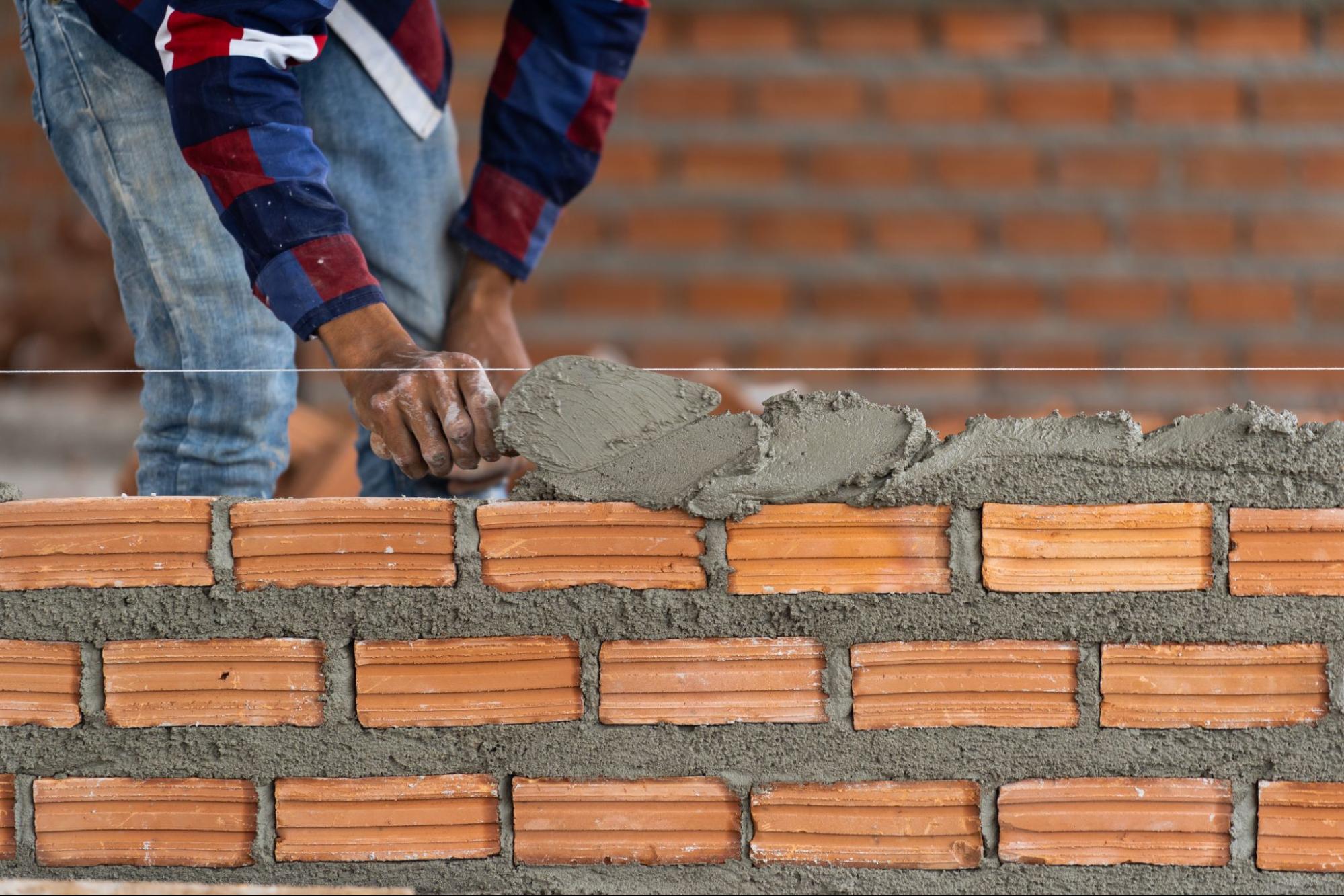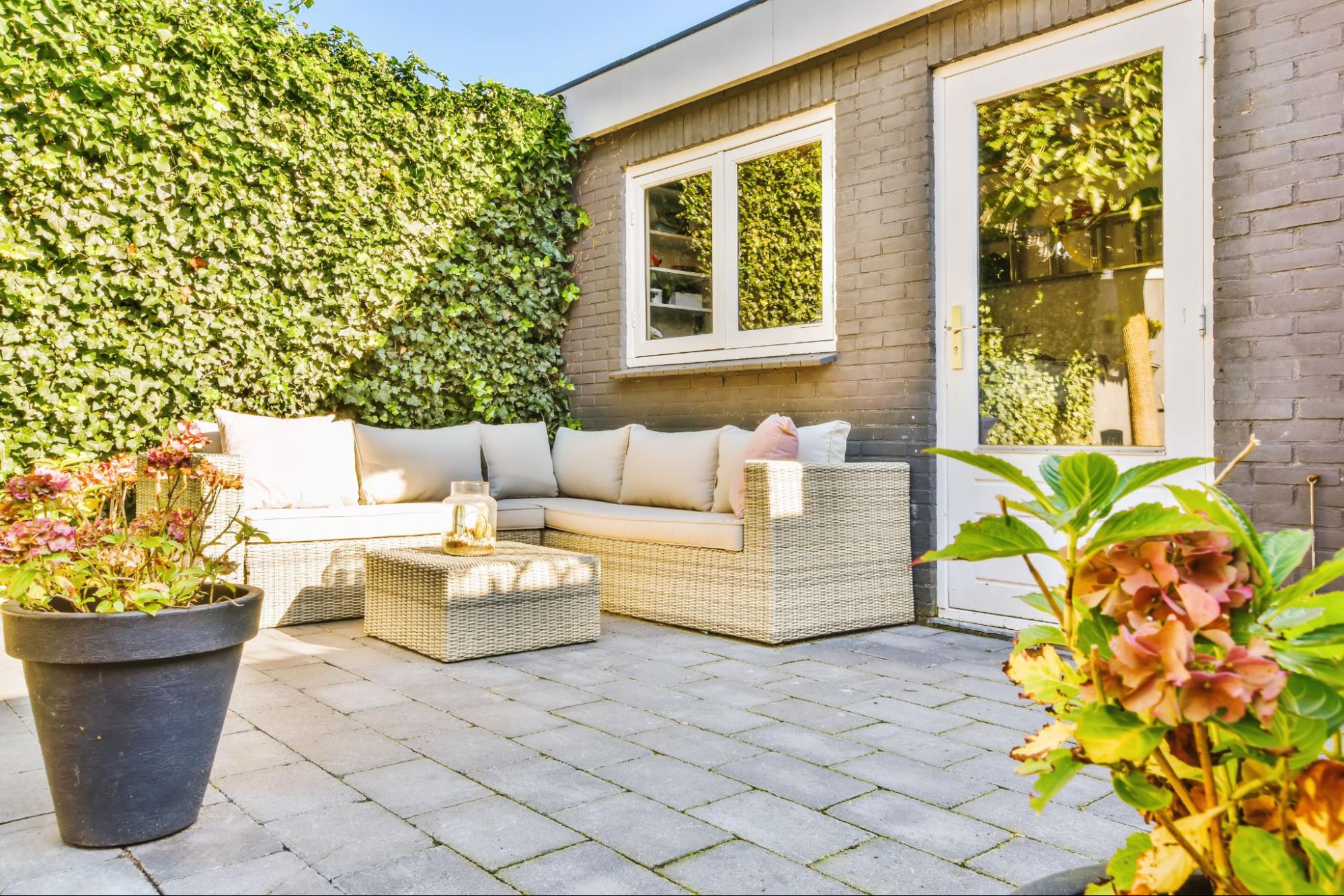
admin
October 22, 2025
Homeowners want outdoor rooms that feel finished, flexible, and easy to maintain, and paver patio design delivers all three. Advances in color-through manufacturing, surface texturing, and edge profiles now rival the look of quarried stone while keeping installation efficient and repair-friendly. The result is a surface that reads upscale on day one and stays that way after heavy gatherings, grill seasons, and weather swings. In 2025, the most admired spaces favor restrained palettes, confident geometry, and detailing that looks effortless because the fundamentals—base prep, drainage, and jointing—are dialed in from the start.
Patterns are the quiet structure under the great hardscape. Running bond, herringbone, and basket weave still dominate because they distribute loads well and guide movement naturally. Still, the newest looks refine scale and border relationships so the geometry supports the architecture rather than competing with it.
Longer plank formats and thoughtful staggering elongate sightlines, creating calm and balanced landscaping.
Forty-five-degree layouts add energy to dining zones while maintaining excellent interlock under chair traffic.
Alternating pairs provide rhythm near porches and cottage gardens without being fussy.
Big pieces, fewer joints, and a tight module create a gallery-like calm outdoors. Large-format slabs (think 24×24 or 24×36) reduce grout lines, make cleaning fast, and let furniture breathe. When joint spacing is disciplined and color is kept to subtle mid-tones, the patio becomes a serene canvas where texture and planting do the talking. This approach pairs beautifully with modern façades, steel accents, and linear fire features because the floor reads as architectural rather than ornamental.
Material blending adds richness without visual noise when executed with restraint. Stone borders, clay accents, and resin-bound gravel inserts each bring their own texture and history to the field, creating a layered composition that feels bespoke.
Sawn limestone or granite bands sharpen edges and protect perimeters in high-traffic zones.
A ribbon of clay near steps or a grill station warms the palette and nods to traditional craft.
Narrow, intentional gravel stripes break up expanses and manage runoff without visible drains.
Entertaining spaces take a beating from heat, spills, and chair movement. The best paver patio design plans for appliance loads, grease management, and comfort zones are established from the initial sketch. Denser pavers under grills, a slight texture for slip resistance, and a layout that keeps prep and seating distinct make evenings flow. Add a low, linear fire feature as a room divider, and the patio gains a focal point that works in every season.
Color should guide the eye, not hijack it. The most current palettes lean into soft charcoals, warm grays, and desaturated tans that complement both wood and painted trim. Contrast appears as a measured border or apron instead of a checkerboard, keeping the composition quiet and elevated.
Muted tones flatter furniture and planting, allowing seasonal color to shine.
A single border course in a darker hue frames the field without fragmenting the view.
UV-stable pigments maintain consistent tones in bright exposures and reduce long-term maintenance.
Compact spaces reward clarity. When the footprint is tight, a simple module with a single, well-placed border keeps the surface from feeling busy. Aligning joints with door mullions and step noses makes the area feel tailored, and a change in joint direction can subtly define a café corner without adding materials. In these yards, a restrained palette and careful scaling make the patio feel larger and more intentional.
Eco-forward choices are mainstream now, not niche. Permeable assemblies recharge the soil, mitigate puddles, and can help with local stormwater regulations, while locally sourced aggregates and recycled content reduce transportation and embodied energy impacts. Because pavers are modular, damaged pieces can be swapped out without replacing the whole field, extending service life and cutting waste.
Open joint or permeable pavers move water quietly, keeping surfaces usable right after storms.
Higher albedo surfaces stay cooler underfoot and reduce radiant heat into nearby rooms.
Regional aggregates match the landscape palette and minimize shipping impact.
The difference between good and extraordinary lives lies in the edges and the unseen layers. When base lifts are compacted correctly, joints stay tight, surfaces remain flat, and chairs do not rock. Borders align with architecture, step nosings carry the same reveal across flights, and transitions to turf or mulch read deliberate rather than improvised. These small disciplines make the patio feel like part of the house, not an afterthought.
Subtle cross slopes and hidden collection keep water moving without visible grates in prime sightlines.
Consistent joints and a clean border course create a tailored frame around seating areas.
Matching riser materials and nosing details carry the floor language up and down with ease.
Straight lines are not mandatory. Soft arcs and sweeping corners can echo planting beds and tree canopies, easing circulation around fire pits or water features. The key is to maintain a consistent joint fan and avoid tiny wedge cuts; larger radius moves feel natural and photograph beautifully. In gardens with layered perennials, curved geometry allows stone and foliage to mingle, creating a relaxed, resort-like atmosphere without compromising structure.

Surfaces have to perform in the real world. In freeze-thaw regions, spec pavers with low absorption and use polymeric sand that tolerates movement. In hot climates, lean into lighter tones and a modest surface texture to reduce heat and glare. For homes with kids and pets, a denser wear layer and sealed edges near splash zones simplify cleanup. When the design accounts for weather and routine from the outset, the patio looks good longer and demands less attention.
The 2025 look is confident yet quiet: larger modules, precise borders, desaturated colors, and craft that reads in the edges. Spaces are planned as true outdoor rooms, considering lighting, furniture, and planting proportions along with the pattern. Sustainability shifts from a checkbox to a baseline, with permeable details and local sourcing assumed rather than advertised. Most of all, the best projects show discipline—materials and geometry working in service of the architecture, so the patio feels inevitable, not just installed.
Pick the mood first, then the module. Decide whether you want serene minimalism, classic pattern, or a blended palette, and let that choice drive size, border strategy, and color. Get the base and drainage right, align joints to architecture, and sample under real light before committing. With those fundamentals in place, the final step is simple: enjoy a surface that elevates everyday meals, weekend gatherings, and quiet mornings alike—proof that thoughtful paver patio designs are as enduring as they are current.
Visit our Onyx Home Improvement blog to learn more about paver patio designs for your outdoor space.
Tags:
Latest News
Recent News & Articles